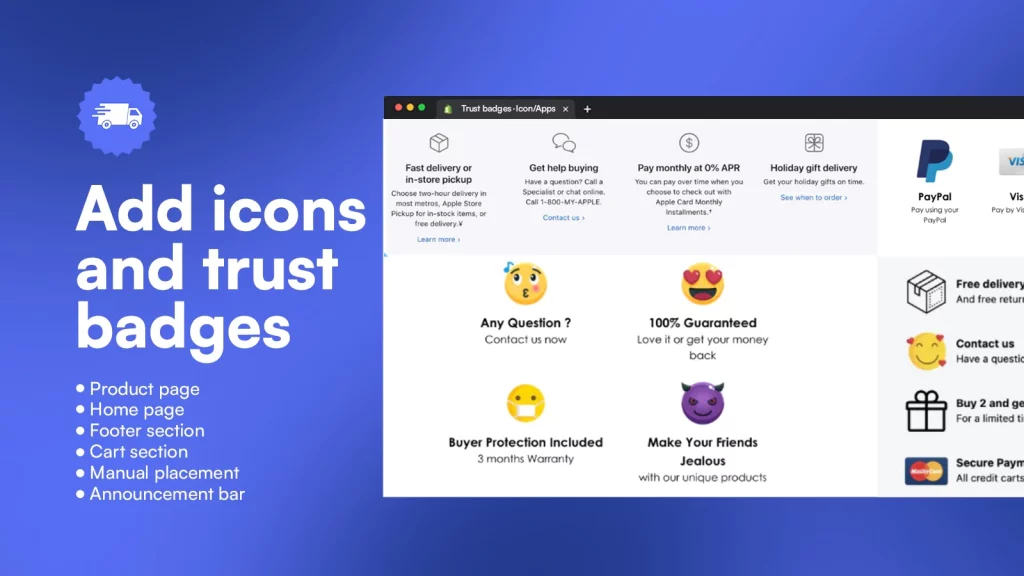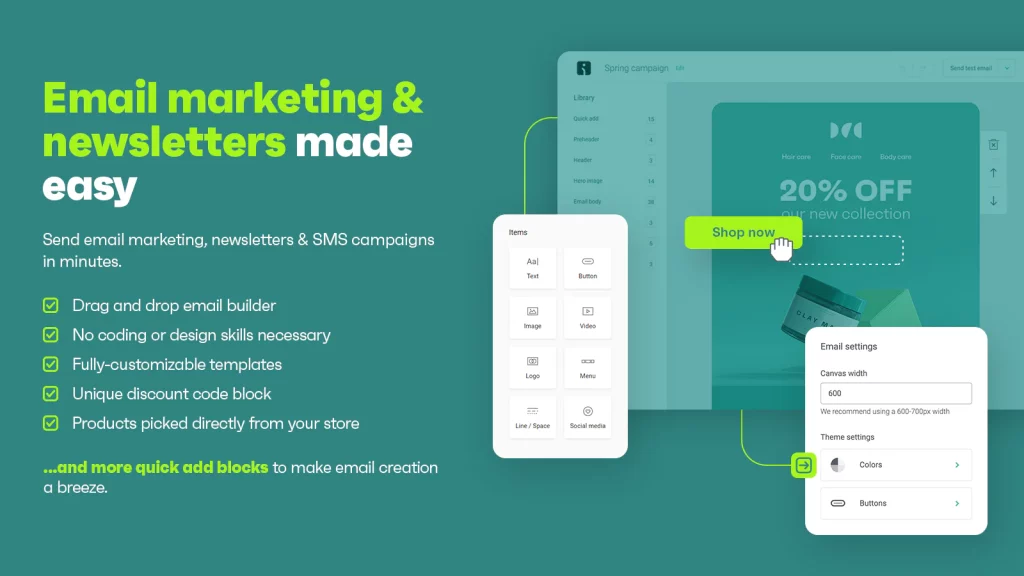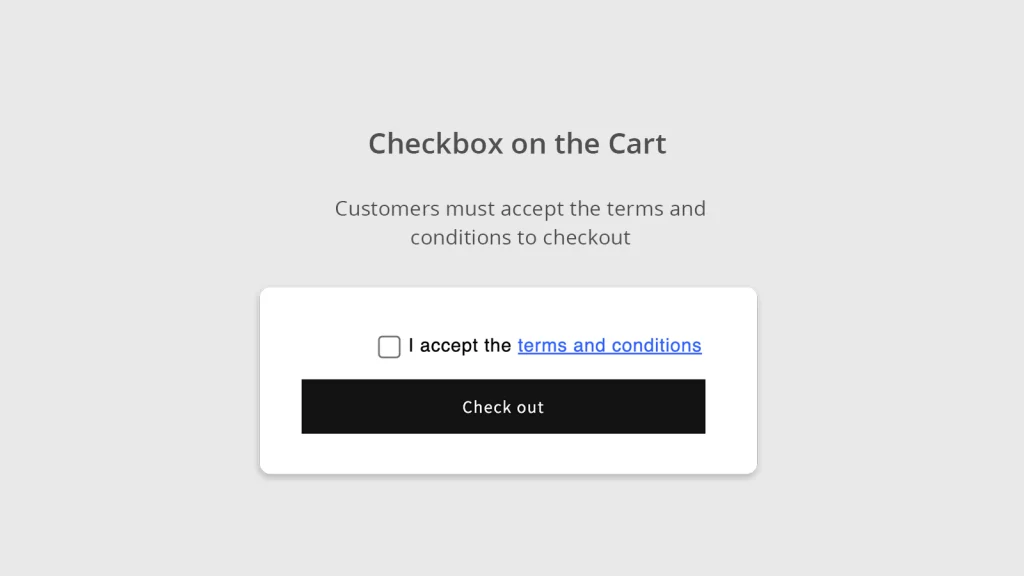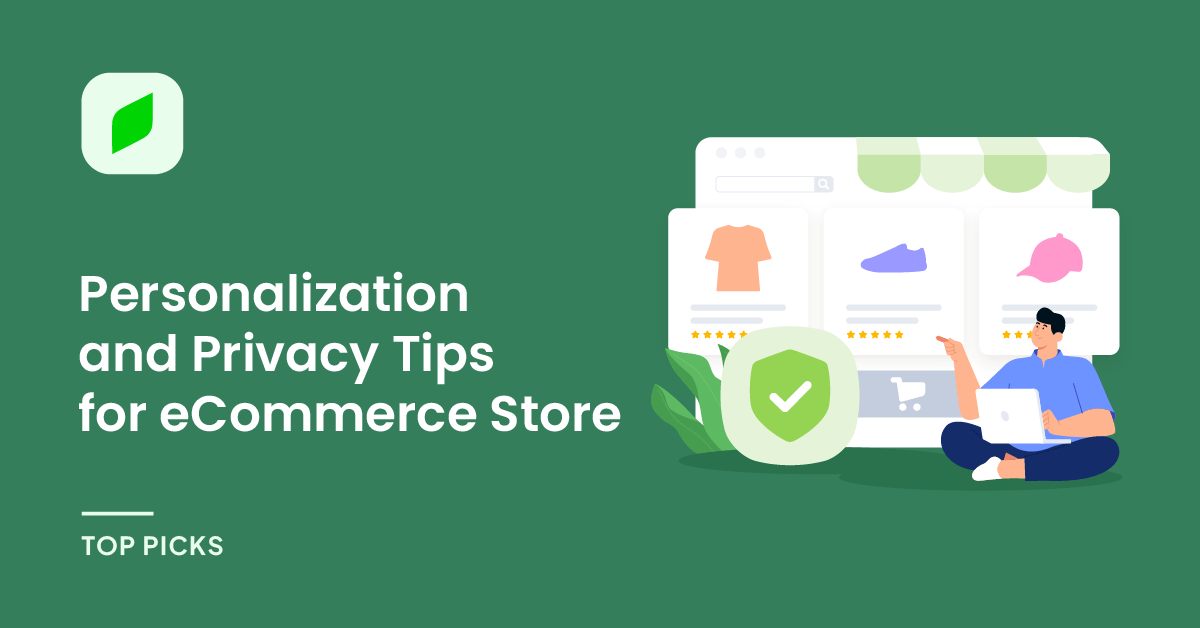When it comes to marketing and sales, personalization is critical. According to McKinsey & Company’s Next in Personalization Report, 76 percent of consumers get frustrated when businesses don’t personalize their interactions, resulting in lower customer loyalty. In addition, a whopping 71 percent of consumers say that they expect personalization.
Personalization comes in many different shapes and forms. Seventy-five percent of consumers say that it’s important for businesses to use personalization to make it easy to navigate their Shopify store, 67 percent say that personalization should give them relevant recommendations, and 66 percent want personalized messaging.
You’ll need to gather relevant data, which raises an additional issue. How do you protect and secure your customer’s information? A National Telecommunications and Information Administration found that 73 percent of Internet-using households are concerned about online privacy and security. Thirty-five percent said those worries prevented them from online activities.
Personalization and privacy are a balancing act. You need data to personalize your eCommerce business’s marketing and sales efforts, but you also must ensure that information is protected. Unfortunately, ignoring data privacy is a quick way to ruin your reputation and diminish trust with your target audience. So let’s find ways to keep personalization and privacy top-of-mind for your business.
Table of Contents
Use Trust Badges for Personalization and Privacy Tips

In the United States alone, there are about 2.5 million eCommerce businesses. Worldwide, that number increases to between 12 million and 24 million. In addition, new eCommerce companies constantly pop up, giving your business more and more competition.
But with all that competition, a problem arises for potential customers. Who do you trust? It’s challenging to know the answer. Many people, unfortunately, get the answer wrong. In 2022, eCommerce users lost an estimated $41 billion across the globe to online payment fraud. You can expect that number to increase to $48 billion in 2023.
With this knowledge in mind, it’s understandable why a potential customer may be hesitant about handing over their credit card information to buy from an online site. So, how can you make a sale and reassure those people they’re making a deal with a reputable business? One way is by using trust badges.
By using trust badges, you’re adding an endorsement to your site to tell your potential customers that your business is on the up and up. You can use various badges, making your website look more official and trustworthy. While you don’t want to crowd your website with them, you should use a select few on your homepage and during checkout. Some examples of trust badges include a Better Business Bureau accreditation, a Secure Socket Layer (SSL) to show that the purchaser’s data is protected, or a free returns guarantee badge.
Optimize and Personalize Your Email Marketing Strategy.
In today’s marketing world, there are tons of channels to consider. Should you market on TikTok? How about LinkedIn? Are Facebook ads still worth it? Should you jump ship on Instagram?
But there’s one marketing channel that’s consistently a good place for eCommerce businesses to be, and that’s email marketing. Email marketing has an average return on investment (ROI) of $39 for every dollar spent. In addition, studies show that marketing through email is up to 40 times more effective than marketing on social media, with the buying process happening three times faster than someone purchasing social media.
Some people see low open rates and click-through rates. These instances are often because the eCommerce company breaks some email marketing cardinal rules. To follow these rules, some data collection is necessary.
Every eCommerce company engaging in email marketing has a sender reputation score established by their internet service provider. With a low sender score, your emails might end up in your intended recipient’s spam folder or, even worse, not be delivered at all.

What causes a low sender reputation score? There are many factors to consider. If your intended recipients mark the emails they do receive as spam, your sender reputation score may drop. A high bounce rate can also lower the score, which means you’re sending to email addresses that may no longer be valid.
You need to ensure your email list is accurate and people are opening your emails. You’ll need data collection and processing tools to take both these actions. Consider investing in an email verification tool to ensure your email list contains active addresses.
A good open rate is generally between 17 and 28 percent. The average open rate across all industries is 21.5 percent. There are many ways to up your open rate, but most of these steps involve using data you’ve collected from the subscriber.
You can include the recipient’s name in the subject line, which can improve open rates by as much as 50 percent. But, first, you’ll need to collect such data to use their name, such as having the potential customer input their name in the subscription box on your website when they subscribe to emails.
Another step you can take is to segment your list so your subscribers only receive relevant emails. The more you send irrelevant emails, the more likely you’ll end up in the spam folder. To create these segmentations, you’ll need to collect additional data.
For instance, if you’re holding an event in Boston, it wouldn’t make much sense to send an email about the event to someone living in San Francisco. Collecting location data can ensure you’re sending the email to only relevant parties.
Establish A Comprehensive Data Governance Strategy.
We’ve already discussed what bad data on your subscribers can do to your sender reputation score. But bad data goes beyond hurting your email marketing. Maintaining inaccurate data can harm your sales, overall reputation, and more. You can also hurt your company with how you interact with the data you collect.

Improper security on the data you’ve collected from your customers and subscribers can put those people at risk, which puts your company’s reputation on the line. Beyond proper security measures, compliance with data privacy laws is crucial. You could jeopardize your company’s future if you’re not in line with these laws.
It’s easier than you think to lose track of your data’s security, privacy, and standards. However, with a data governance framework, you can take steps to ensure you’re compliant with data regulations and protect your business ventures.
One of the primary reasons why data governance falls by the wayside is that companies often ask whose job it is to handle these measures. Ideally, it shouldn’t just be one person but an entire team with clearly defined roles. With multiple people overseeing your data governance framework, they can check and recheck each other’s work, ensuring nothing slips through the cracks.
But before you can hire a team to implement this framework, you must establish their roles. You must have comprehensive data governance policies, including who is responsible for managing and using data and how users will interact with this data. You must also have a set of standards for ensuring your data is high-quality and for how you will keep what you collect secure.
Data governance is an ongoing venture. First, you must be vigilant in managing your data, ensuring you review it for accuracy and security. Once you have a team dedicated to data governance, constant maintenance will become easier.
Have a clearly defined, transparent privacy policy.
Potential customers want to know where their data is going. By having a privacy policy that’s easily accessible to them, you’re developing trust and making them more likely to feel comfortable doing business with you.

But a privacy policy goes beyond being a way to establish trust. In most cases, it’s not just a good idea. It’s a legal necessity. Many countries have made it a requirement to have such a policy on an eCommerce website. For example, the European Union has the General Data Protection Regulation (GDPR), which regulates data privacy and imposes penalties if those requirements are unmet. These regulations aren’t just for European companies. They’re for any company doing business in those regions.
Canada has a similar law. While the United States has no such federal data privacy law, several other national and state laws function similarly, like the Children’s Online Privacy Protection Act (COPPA), which regulates how you can collect information about people under 13. Not having a comprehensive privacy policy on your website could break these rules and restrictions, resulting in hefty fines and other detriments to your business.
When writing your privacy policy, there are certain aspects to consider. As a part of the policy, you should always make your business’s information, like your email and phone number, accessible. This action goes back to establishing trust with your customer. You want to have this information available to them should they have any questions about your privacy policy.
You should also be direct about what type of data you’re collecting. If you spell out what you’re collecting, there will be fewer questions and confusion. You’ll need to explain what you’re doing with that data, including whether or not it can be re-sold to a third party, how you plan to protect the information, and how long you store it.
To comply with specific laws, you must give the customer some control over what you can do with the data. For example, how can customers opt out of data collection? Can they agree now but withdraw permission later?
Because you must adhere to these laws and regulations, working with a law firm to write your privacy policy is generally a good idea. They will be more well-versed in the law, which protects your company from penalties for not being compliant with the rules.
Encrypt your data.
Data breaches are a serious problem. If you’re not protecting the information you’re collecting from your subscribers and customers, you’re putting them at risk. But you’re also putting your company at risk.

Unfortunately, data breaches happen often, and companies have to pay heavy penalties. For example, consider what happened to communications giant T-Mobile in 2021. Some of T-Mobile’s customer data was listed for sale on a cybercriminal forum. This data breach impacted an estimated 77 million people.
T-Mobile eventually settled when a class action lawsuit followed the breach. The company paid $350 million, partially to pay the plaintiffs and partially to commit to more spending for data security.
Since 2018, T-Mobile has endured nine separate data breach incidents, with two happening in the first half of 2023 alone. So if mega companies like T-Mobile are constantly at risk, how can you protect yourself and your business?
One way to start is by encrypting your customers’ data. Encryption scrambles text to make it unreadable to those who want to harm you. By taking steps to encrypt your data, you’re making your customer’s personal and private information less accessible to hackers and thieves.
Some computers come with built-in encryption programs, but you may instead need to go to a third-party vendor for comprehensive encryption. Sometimes, you can get an encryption program alongside an anti-malware tool, increasing your protection level.
Before you encrypt anything, be sure to back up all files. Continue backing up your files regularly moving forward, as a crashed or corrupted encryption disk can result in you losing the data forever. In addition, always keep your encryption key and passcode safe and use a virtual private network (VPN) on your laptop or other mobile devices.
Wrapping Up Your Personalization and Privacy
Personalization and privacy should go hand in hand in your eCommerce business. While personalization can help you boost your marketing tactics and sales, it requires some level of data collection, so you need to consider your customers’ privacy.
Create trust with your customer through trust badges and a comprehensive privacy policy, establish an encryption process and a data governance framework, and save yourself from the dreaded spam folder by maintaining a high sender reputation score. You can better balance your personalization and privacy efforts through these steps, upping your business’s sales and boosting its standing.
